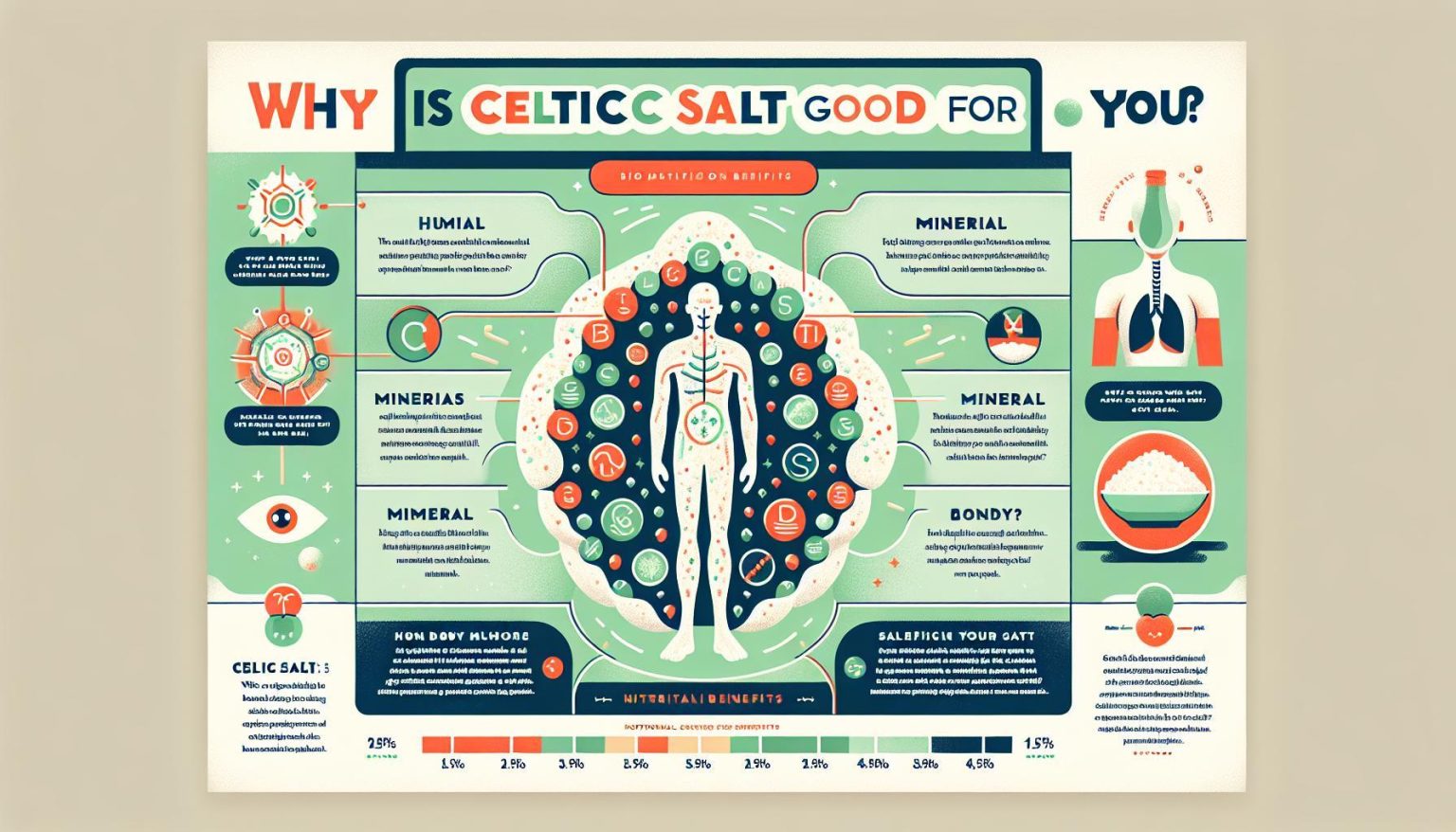In a world teeming with ‘Global Nutrition Trends’ and an ubiquity of diets from ketogenic to ‘Plant-Based Diets Worldwide’, a profound understanding of dietary fats is essential. Dietary fats are an indispensable part of our nutrition and have a critical impact on our overall health. Thus, understanding the role and significance of dietary fats in global health could be the key to addressing several health-related challenges that the world faces today.
An Overview of the Role and Importance of Dietary Fats in Global Health
The role of dietary fats in nutrition is multifaceted. Fats provide energy, support cell growth, and help protect our organs. They are essential for absorbing essential vitamins and minerals and are necessary for the production of essential hormones. Today, dietary fats have significance beyond personal health – they are consumed and perceived differently across the globe, thereby influencing global health patterns.
Dietary fats come in several forms, including saturated fats, unsaturated fats, and trans fats. High consumption of certain types of fats, especially trans fats and saturated fats, has been directly linked to adverse health outcomes, including heart disease and stroke. This pattern heralds an urgent need to address dietary fat consumption on a global scale.
The Global Significance of Addressing Dietary Fat Consumption
Despite the broad understanding of the adverse health implications associated with the high consumption of certain types of fats, consumption patterns do not reflect a shift towards healthier choices in all regions of the world. This observation emphasizes the global significance of addressing dietary fat consumption. Taking a global perspective, the topics of ‘Dietary Fats: Global Perspectives’ and ‘Fermented Foods and Nutrition’ draw considerable attention. The former facilitates an understanding of dietary fat consumption behaviour worldwide, while the latter procures an insight into their potential health benefits.
The interaction of dietary fats with non-communicable conditions such as obesity, cardiovascular diseases, and diabetes, further underlines the necessity of addressing the role of dietary fats in global health. This dialogue must be supported by public health policies and initiatives aimed at reducing harmful dietary fat consumption.
Leaving no stone unturned, it also becomes crucial to understand the various types of dietary fats, their sources, and health implications. This is where the second section of this exploration comes into play, as it delves deeper into a comprehensive overview of the different types of dietary fats.
A Comprehensive Overview of the Different Types of Dietary Fats
Let’s dive deeper into the diverse range of dietary fats, each having unique attributes relating to their chemical structure, sources, and potential implications on health.
Explanation of the Different Types of Dietary Fats
Saturated fats are generally solid at room temperature and mainly found in animal products such as red meat, butter, and cheese, as well as some plant-based sources like coconut oil.
Unsaturated fats can be divided into monounsaturated fats and polyunsaturated fats. Monounsaturated fats, prevalent in olive oil, avocados, and some nuts, are known for their heart-healthy properties. Polyunsaturated fats, present in foods like fish, walnuts, seeds and vegetable oils, are essential fats – they are needed for body functions but the body can’t produce them.
Trans fats are typically formed through an industrial process that adds hydrogen to vegetable oil, resulting in a product that is solid at room temperature. Bakery products, fast food, snack food, fried food, refrigerated dough, and non-dairy creamers are common sources of trans fats.
Sources of Each Type of Dietary Fat
The dominant sources of dietary fats vary based on their type. Red meats and dairy products are primarily contributors of saturated fats. Unsaturated fats are chiefly sourced from vegetable oils and fresh produce. Seafood, particularly fatty fish like salmon, are significant sources of omega-3 polyunsaturated fats.
Trans fats are mainly found in processed foods such as cookies, fried items, and commercially-baked pastries. It is advisable to check food labels for hydrogenated or partially hydrogenated oils – a clear sign of the presence of trans fats.
Health Implications of Consuming Each Type of Dietary Fat
Saturated fats have been controversial, with some research linking them to heart disease due to their ability to raise LDL (bad) cholesterol levels. However, more recent research suggests that not all saturated fats are the same, and some may have neutral or even beneficial effects on heart health.
Unsaturated fats are generally healthier, helping to reduce LDL cholesterol, increase HDL (good) cholesterol, and provide essential fats your body needs.
Trans fats have the most detrimental health implications – they not only raise LDL cholesterol but also reduce levels of HDL cholesterol. This dual effect can accelerate the development of heart disease and stroke, leading to international efforts to reduce their usage in processed foods.
Having discussed the different types of dietary fats, it is now essential to understand their global consumption patterns and the factors that influence them. As we continue to the next section, “Understanding the Global Variations in Dietary Fat Consumption”, we will examine this in detail.
Understanding the Global Variations in Dietary Fat Consumption
The global consumption of dietary fats is noticeably diverse and significantly influenced by a myriad of factors which include geographical location, cultural inclinations, and socioeconomic status. Our health and wellbeing are intimately linked with the fat we consume, thus it’s crucial to gain an understanding of the global variations in dietary fat consumption and its implications on world health.
Examination of Global Dietary Fat Consumption Patterns
The patterns of global dietary fat consumption are as assorted as the countries populating our planet. Regardless of the type of dietary fats – whether saturated, unsaturated, or trans fats, their intake rates differ dramatically across different regions.
High-income nations tend to have greater intake of dietary fats – trans fats in particular – due to the widespread accessibility to processed and fast foods. Meanwhile, lower-income countries generally lean towards diets that are low in fats but high in carbohydrates due to the predomination of staple foods like rice, maize, and wheat.
Comparison of Dietary Fat Consumption in Different Regions of the World
To elucidate on the variation in dietary fat intake, let’s explore some regional differences. In Western countries such as the United States or United Kingdom, diets tend to be higher in saturated and trans fats. This is predominantly due to higher meat consumption and the popularity of processed foods.
In contrast, the Mediterranean diet, often considered one of the world’s healthiest diets, is rich in unsaturated fats derived from olive oil, fish, and nuts. Meanwhile, in Asian countries, the diet is typically low in dietary fats and focused predominantly on rice-based dishes, vegetables, and lean proteins.
Exploration of Cultural and Socioeconomic Factors Influencing Dietary Fat Consumption
Cultural and socioeconomic factors play a profound role in determining dietary fat consumption. Economic circumstances can restrict access to healthier food options that are often pricier, leading to a higher intake of harmful fats.
Furthermore, cultural traditions and food preferences also significantly affect dietary choices. A prime example is the Mediterranean region where olive oil, a key source of unsaturated fats, is an essential component of their meals, organically generating a healthier dietary fat intake trend.
Understanding these differences in dietary fat intake is a fundamental step to implement suitable strategies aimed at promoting healthier dietary habits.
The Impact of Dietary Fats on Global Public Health and Policy
Grasping the global variations in dietary fat consumption serves as a foundation to explore the impact of dietary fats on global public health and policy. Our next investigation will delve into the health implications of high dietary fat intake and explore the role of dietary fats in the advent of diseases like obesity, cardiovascular disease and diabetes.
The Impact of Dietary Fats on Global Public Health and Policy
One of the most noticeable concerns in global health today is the rising prevalence of non-communicable diseases such as obesity, cardiovascular diseases, and diabetes. These diseases, often related to dietary habits, are showing a concerning increase especially in economically developed nations or those undergoing rapid urban development. High dietary fat consumption is singled out as a significant contributor to these problems.
Health Implications of High Dietary Fat Consumption
Studies have established a clear link between excessive dietary fat consumption and various health concerns. High dietary fat intake, particularly of saturated and trans fats, can lead to a host of health problems including obesity, heart diseases, and other related complications. Excess fat in the diet increases low-density lipoprotein cholesterol levels – dubbed as the “bad cholesterol” – in the body, leading to fat deposition in the arteries. This can cause harmful side effects such as atherosclerosis, cardiovascular disease, and stroke. Simultaneously, an imbalance of dietary fats affects body weight regulation leading to obesity which, in turn, increases the risk of developing type 2 diabetes.
Role of Dietary Fats in the Prevalence of Diseases
The prevalence of obesity, cardiovascular disease, and diabetes can be significantly associated with poor dietary patterns characterized by high dietary fat consumption. These diseases, collectively known as diet-related non-communicable diseases, are a major and growing public health challenge globally. Western-style diets, high in saturated fats and trans fats, have been associated with higher risks of these diseases. It’s hindering the global progress toward the reduction of premature mortality from non-communicable diseases, a key target within the United Nations Sustainable Development Goals.
Global Public Health Policies Targeting Dietary Fat Consumption
Recognizing the plethora of health issues associated with high dietary fat intake, many countries have implemented public health policies aimed at reducing fat consumption. The World Health Organization has recommended a reduction in total fat intake to less than 30% of total energy intake and a shift in fat consumption patterns towards unsaturated fats and away from saturated fats and trans fats.
Initiatives such as nutrition labelling, public health campaigns targeting dietary habits, and regulations regarding food advertisement especially towards children, are stepping stones taken by policy makers towards managing this public health issue. More recently, fiscal policies such as sugar and fat taxes have also been implemented for a preventative approach.
As we move towards healthier practices, it’s vital to understand how to sustainably implement these practices on a global scale. We need to discuss these sustainable and healthy options, explore strategies for promoting responsible dietary fat consumption and point out potential barriers and challenges on a global stage.
And that’s what we’ll be exploring next, in the following section: “Implementing Sustainable Dietary Fat Practices on a Global Scale.”
Understanding the Global Variations in Dietary Fat Consumption
When it comes to dietary fat consumption, there are significant variations in patterns and preferences across different regions of the world. These variations are influenced by a multitude of factors, including cultural traditions, socioeconomic status, and availability of resources.
Examination of Global Dietary Fat Consumption Patterns
Global dietary fat consumption patterns can vary widely, with some regions showing a preference for certain types of fats over others. For example, in Western countries, there is a higher consumption of saturated fats, often found in animal products and processed foods. On the other hand, many Asian and Mediterranean countries have a higher consumption of unsaturated fats, derived from sources such as olive oil and fish. These consumption patterns are reflective of cultural and dietary traditions that have been passed down through generations.
Comparison of Dietary Fat Consumption in Different Regions
Studies have shown that there are significant differences in dietary fat consumption between regions. For example, the average consumption of dietary fats in North America is much higher than in many parts of Asia and Africa. These differences can be attributed to a variety of factors, including the availability of certain types of fats, as well as cultural and dietary preferences.
Exploration of Cultural and Socioeconomic Factors
Cultural and socioeconomic factors play a significant role in shaping dietary fat consumption patterns. In many Western countries, there is easy access to processed and fatty foods, which can contribute to higher consumption of unhealthy fats. On the other hand, in regions where resources are scarce, there may be a greater reliance on plant-based fats and oils. Additionally, cultural traditions and culinary practices can also influence the types of fats that are commonly consumed in different regions.
Conclusion
Understanding the global variations in dietary fat consumption is crucial for developing targeted public health interventions and policies. By recognizing the factors that influence dietary fat preferences, we can work towards promoting healthier and more sustainable dietary fat practices on a global scale.
Frequently Asked Questions
1. What are the health implications of high dietary fat consumption?
High dietary fat consumption has been linked to an increased risk of obesity, cardiovascular disease, and diabetes. It is important to consume fats in moderation and to choose healthier sources of fats, such as unsaturated fats found in nuts, seeds, and fish.
2. How do cultural traditions influence dietary fat consumption?
Cultural traditions can strongly influence dietary fat consumption, as certain types of fats are often integral to traditional cooking and cuisine. For example, olive oil is a staple in Mediterranean diets, while butter and animal fats are commonly used in Western cooking.
3. What are some strategies for promoting balanced dietary fat consumption?
Some strategies for promoting balanced dietary fat consumption include educating individuals about the different types of fats and their health implications, as well as providing access to healthier fat sources, such as nuts, seeds, and plant-based oils.
4. Are there global public health policies aimed at reducing dietary fat consumption?
Yes, many countries have implemented public health policies aimed at reducing dietary fat consumption, such as regulations on trans fats in processed foods and initiatives to promote healthier cooking practices.
5. What are some potential barriers to implementing sustainable dietary fat practices on a global scale?
Barriers to implementing sustainable dietary fat practices may include cultural resistance to change, limited access to healthier fat sources in certain regions, and the influence of the food industry in promoting unhealthy fat consumption.










